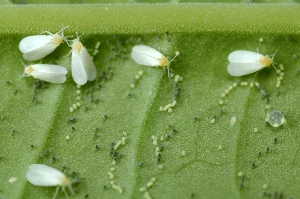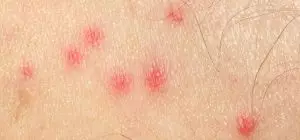Roaches are a joy to have around, said no Floridian, ever. Let’s be honest. Roaches are not enjoyable to have around. And, not just because they are creepy and gross. They can be a threat when they get into a home. Not only will these filthy insects bite you if their populations get too high, causing red, swollen areas on the skin, they are also directly connected to exacerbating asthma, various stomach illnesses, and the spread of parasitic worms. They are linked to human diseases such as dysentery, cholera, leprosy, plague, typhoid fever, and viral diseases like poliomyelitis. This having been said, it is important to know what types of cockroaches we regularly have to deal with here in Florida, as well as what can be done about them. Here are four of the most common types of roaches found in the Sunshine State.
Smokybrown Cockroach (Periplaneta fuliginosa)
As its name suggests, this cockroach is a smoky brown color. The head of this roach is shiny black with slightly curved antennae, and it has 6 legs which are lined with spines. These roaches are good flyers which grow to be approximately 1.5 inches in length and their wings extend past their bodies. With a tendency to dehydrate easily, this type of cockroach prefers to stay in very moist, warm areas where they are safe from the drying effects of the elements. They can typically be found under mulch, in tree holes and around eaves and soffits. These roaches will eat anything, but they prefer to eat decaying plant material. Some things they will eat if necessary are animal feces, dead bodies, dead trees, and even their own young.
German Cockroach (Blattella germanica)
Easily identified, these roaches sport two horizontal stripes on the pronotum behind their head. They grow to be slightly more than ½ an inch in length and are tan to light brown in color. Though young German cockroaches are almost black (with black stripes). The antennae on a German cockroach are long and, unlike the smoky brown roach, almost straight. They have six legs containing rows of spines, and wings–though they rarely fly.
Although able to survive in tropical environments, outdoors, they prefer to live inside in warm, moist environments. Once inside a structure, they are easily able to move from area to area, or between apartments, by way of pipes and plumbing. The females of this species need only to mate one time before reproducing for the rest of their lives! Typically, a female German cockroach will reproduce 4 to 6 times, each time producing 30 to 40 eggs. That’s a lot of baby cockroaches!
Asian Cockroach (Blattella asahinai)
Nearly identical to its German cousin, these roaches also have the horizontal stripes. But it’s wings are longer than those on a German roach, which contributes to them being strong flyers. Though the German cockroach prefers living indoors with humans, the Asian cockroach prefers to live outdoors in tropical or subtropical climates. It was first discovered in Florida in the late 1980s and prefers to hang out in gardens, shaded areas, mulch, and leaf litter. If they do get inside, because they are attracted to light, they can sometimes be found crawling around on TV screens, lamps, and computer screens.
American Cockroach (Periplaneta americana)
This roach is often referred to as a “palmetto bug” and is mostly red-brown or mahogany with black markings and 2 yellowish colored circles behind its head. These big roaches can grow to over 3 inches in length. Their antennas are almost straight and their six legs are, like the other roaches, lined with spines. Both the males and females are able to fly with the large wings that are slightly larger than their bodies.
These roaches also prefer living outside in damp, warm areas, and are common in sewer systems. If necessary, they will enter homes in search of water and food. If they get inside, they can commonly be found in basements, bathrooms, kitchens and laundry rooms. These are all places that tend to be warm and humid.
If you would rather not have these dirty, disease-causing insects crawling around inside your Florida home, let Nozzle Nolen help today.

